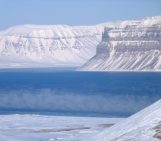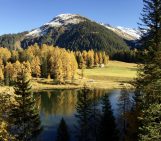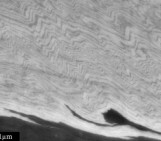
The huge fold in the flank of the 2969 m high Dent de Morcles (in Waadtland Alps, Switzerland) is an impressive testimony to the collision between Africa and Europe (which began some 65 million years ago). The layers, originally deposited on the sea floor in a horizontal position, were compressed and shifted. The darker parts developed during the Tertiary period (66 million years ago). They are younger than the greyish and yellowish limestone of the Cretaceous period (which began 145.5 million years ago and ended 79 million years later).
With the aim to capture the Dent de Morcles, this spectacular geological feature, I took a photo flight in the Waadtland Alps in Switzerland. We started with a helicopter from a little airport around 20 kilometres away from this location. The weather was mixed – sunny with a few clouds around. But when we reached Dent de Morcles the sun was hidden by a cloud which didn’t move away. We circled and circled around waiting for sun rays to light up the fold structure. I got quite nervous because every minute up there costs a lot of money. Suddenly a little whole opened in this huge cloud and Dent de Morcles was illuminated, exactly as I’d hoped for. Only for some seconds. But enough time to take this aerial shot.
By Angelika Jung-Hüttl (Freelance science author) and Bernhard Edmaier (geologist and photographer)
Imaggeo is the EGU’s online open access geosciences image repository. All geoscientists (and others) can submit their photographs and videos to this repository and, since it is open access, these images can be used for free by scientists for their presentations or publications, by educators and the general public, and some images can even be used freely for commercial purposes. Photographers also retain full rights of use, as Imaggeo images are licensed and distributed by the EGU under a Creative Commons licence. Submit your photos at http://imaggeo.egu.eu/upload/.




